Build Diary entries for September 2022
Here are the diary entries for this month. You can use the forward and backward links to see the next or previous months. Most photos taken before 2018 are small size. From 2018 onwards, most photos you see below will have a link to a full size image by clicking on the photo.
| Checking End Covers |
| 05/09/2022 |
| |
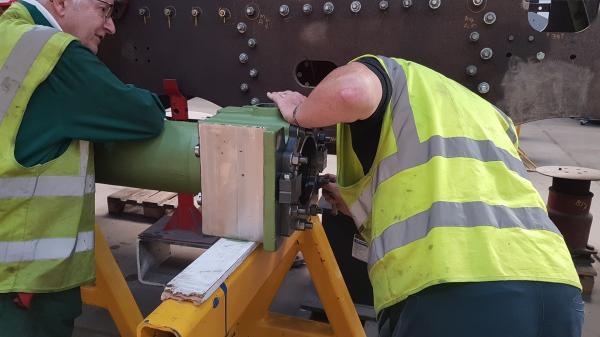 |
| |
If you look at the photo for the 23 August, you will see the end covers for the bogie cannon axle boxes on either side of the measurement table. The inside face of the cover has a circular spigot that engages with the inside of the cannon box. The tolerances on this spigot were slightly on the tight side so, last week, the covers went back to Generic Engineering. Today, we tried fitting the end covers and here is Geoff attempting to get a 1.5 thou inch feeler gauge into the gap between the end cover and the cannon box body. This was not possible anywhere round the edge of the cover so these parts are now signed off. Next week, Ashley will start painting the inside of the cannon boxes with 2 part, oil resistant paint. |
| |
|
| Bogie Bolsters |
| 08/09/2022 |
| |
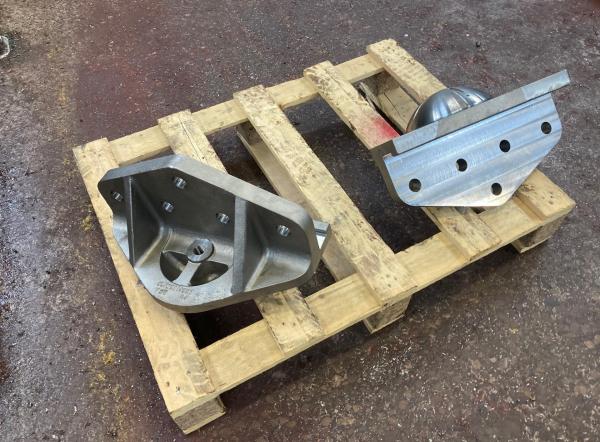 |
| |
Bogie bolsters are fitted to the underside of the frames and their job is to transfer the weight of the front of the locomotive to the bogie. The bolsters rest in bolster cups that sit on brass pads bolted to the top surface of the central bogie stretcher. As the bogie pivots around the central pivot, the bolster cups can "float" over the brass pads. The bolsters are grease lubricated through the central hole seen on the left hand bolster. A pair of bolsters had been manufactured many years ago but, unfortunately, no paperwork could be identified. As we felt that the bolsters were a critical component, we felt that they had to be scrapped and replaced. The bolsters were cast and machined by Furniss and White in Sheffield. Photograph courtesy of Josh Kershaw |
| |
|
| Checking the fit of the bogie cannon axle box roller bearing outer race |
| 20/09/2022 |
| |
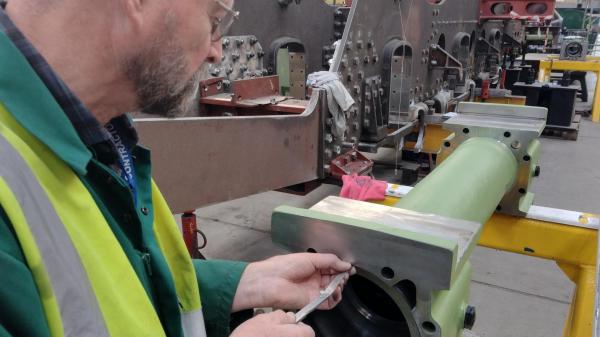 |
| |
The final check is to check that the outer race is a good sliding fit in axlebox and measure the clearance. This one was measured at .0015" and is within the Timken recommendation of .001" to .003" for this type of bearing. All the careful preparation over the last couple of months is starting to pay off. |
| |
|
| Preparing the Bogie Cannon Axleboxes |
| 20/09/2022 |
| |
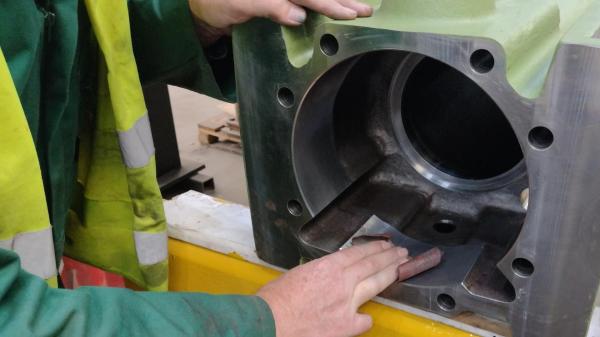 |
| |
As part of our checks before sending the bogie cannon axleboxes to the South Devon Railway, we are checking the fit of the the parts. Here Geoff Turner is taking high spots off the bore of the axle boxes with fine grade emery cloth while doing a trial fit of the roller bearing outer races. |
| |
|
| Checking Spring Hangers |
| 20/09/2022 |
| |
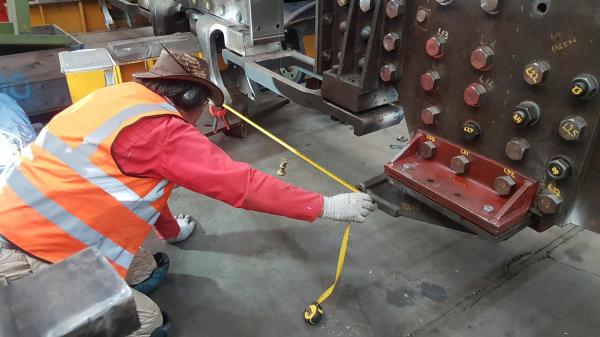 |
| |
Mike Healey checking the spring hangers. We've been carefully checking the position of the toe of the spring hangers. This should be equidistant from the axle centre line. Once the trailing spring hanger is confirmed to be in the correct position, we can open out the bolt holes to the 1" diameter for the bolts. |
| |
|
| Bogie Cannon Axleboxes |
| 26/09/2022 |
| |
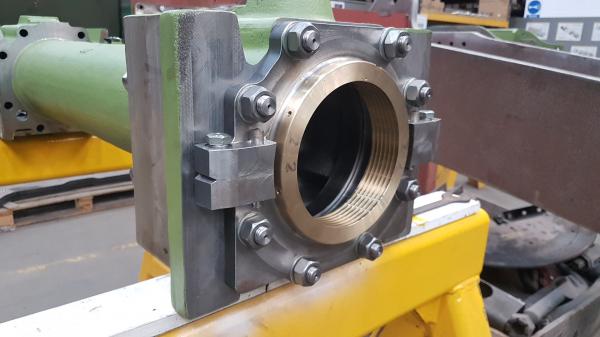 |
| |
1 cannon axlebox is now ready for internal painting where we will use 2 pack, oil resistant paint. In preparation, the inside was washed out today with a Jizer degreasing spray and then cleaned out with water. Painting is scheduled to start next week. On the other axlebox, the final bearing housing has being receiving attention to ensure the correct fit of the bearing. We also test fitted the end covers and the enclosure ring. All of these are in halves so that they can be removed to allow bearing inspection. The bronze ring is the enclosure ring with the grooves of the labyrinth seal visible |
| |
|
| Bogie Cannon Axleboxes (2) |
| 26/09/2022 |
| |
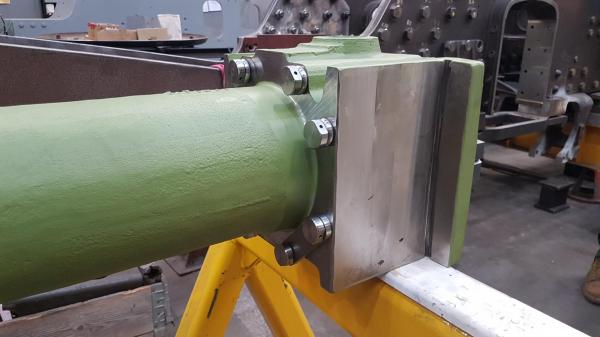 |
| |
This a view from the other side showing the heads of the through bolts. Pairs of bolts will be wired together. The washers are to the shape shown on the BR (Timken) drawing. The plate at the bottom connected to 2 bolt heads is a temporary fitting to close off the oil filler hole. A filler and level housing will need to be manufactured later. |
| |
|









